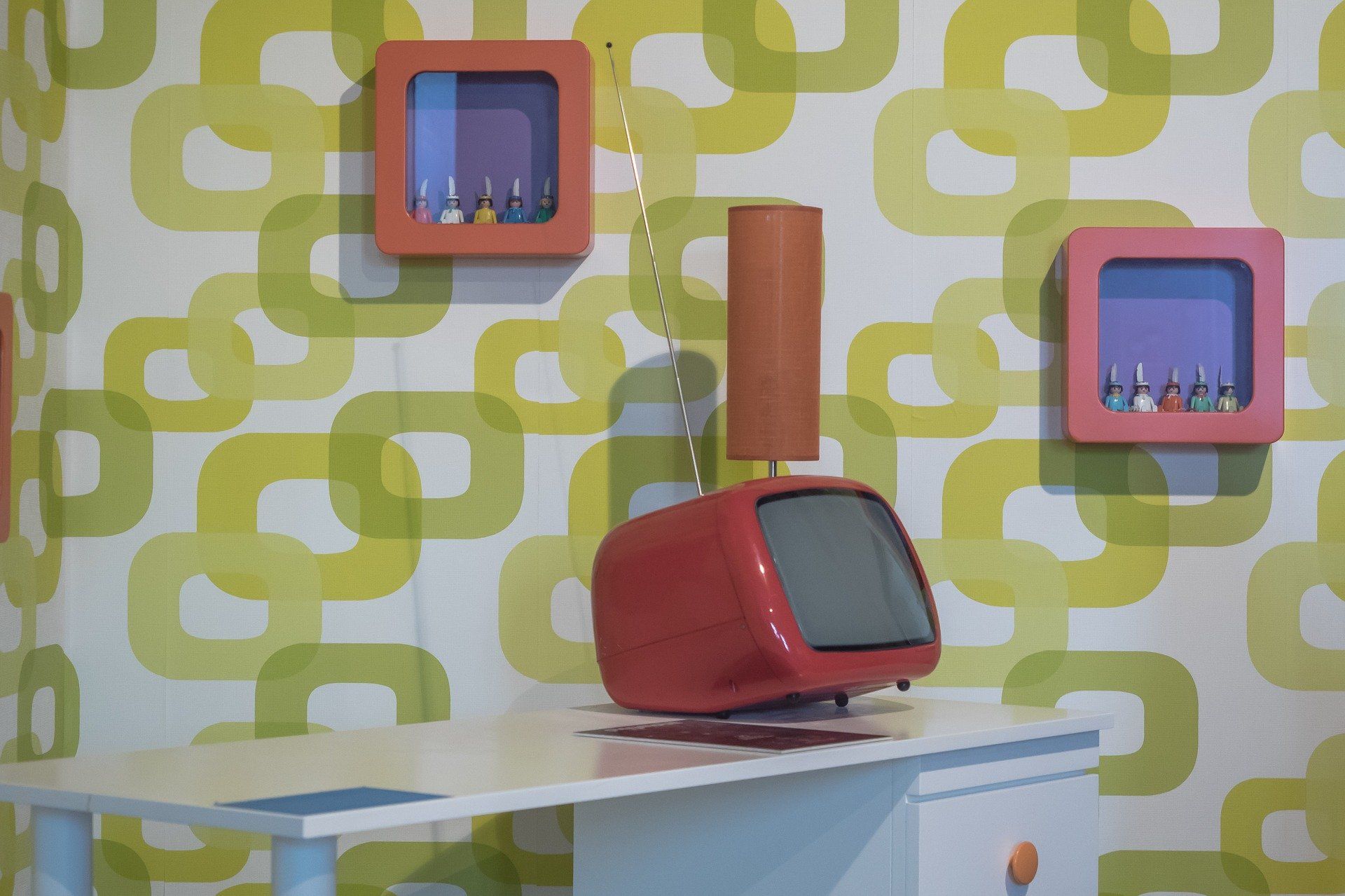Blog

Seventy years ago, when French politician and writer André Malraux outlined his vision of a ‘museum without walls’ – an imaginary place containing the finest art in the world with no geographical borders or limits – he had no inkling that his words would be reinterpreted, recontextualised, in the internet age. But as Britain remains in a state of lockdown amidst the coronavirus pandemic, being online has never felt so essential. Now, scrolling on a smartphone is not just about watching funny dog videos (although they are marvellous) or tweeting about a TV show. Living in imposed isolation has made even the most resolute of technophobes acknowledge the increasing importance of gadgetry in our everyday lives. From chatting to loved ones we can’t visit, to home schooling, to holding Zoom meetings with similarly housebound work colleagues, digital has come into its own. Virtual is the new reality. The silver lining in all of this is that our myriad museums and art galleries have been digitising their collections for years, with some also offering virtual exhibitions and tours. If you’re anything like me – a fervent gallery-goer – putting more arts and culture online is a lifeline. Here are just some of the highlights available right now. Leeds Museums and Galleries Fast x Slow: Fashion Shopping for Clothes in Leeds 1720-2020 This interesting online exhibition looks at 300 years of clothes shopping in Leeds – not only exploring how the shops have physically changed, but also how consumer behaviour has altered over time. Birmingham Museums and Galleries Enjoy a virtual tour of art galleries, learn about the history of Birmingham, and explore the Staffordshire Hoard. British Museum Always wanted to view Sutton Hoo ? Thanks to Google Maps technology, now’s your chance. Rydale Folk Museum, North York Moors National Park Known as an open-air museum, the six-acre site also houses an image library documenting Yorkshire life, from farming to leisure. And for the kids, there’s a selection of engaging activity sheets to download, with a new one added each week. Harris Museum and Art Gallery, Preston The Lancashire museum offers a selection of virtual galleries to explore and, if you have a head for heights, the impressive Egyptian Balcony. National Gallery Go on a virtual walk through galleries featuring magnificent Renaissance masterpieces from Northern Europe, including works by Titian, Veronese, and Holbein. Tate Modern The first Warhol exhibition at Tate Modern for nearly 20 years and not to be missed. In addition to his iconic Campbell’s Soup and Coca-Cola cans, this retrospective features work never shown before in Britain. Museum of Brands Once Upon a Try: Inventions and Discoveries From aerosols to milk cartons, this online exhibition looks at some of the most significant packaging inventions and designs that have influenced our daily lives. National Science and Media Museum, Bradford The television technology section is one of my favourites – not just because it has a Betamax video recorder (yes… I had one). The Arts Society More than 90,000 people worldwide normally enjoy the fellowship of this network, meeting up for lectures and gallery trips – and now the society has launched an online version , designed to keep art-lovers connected in these isolated times, featuring online lectures and a forum. :: Most museums and galleries are on Facebook, Twitter and Instagram. Check out #MuseumFromHome on social media for more art online.

Many years ago, I received a piece of advice from a female friend: “Don’t feel self-conscious if you are dining alone in a public place,” she said. “I always take a book wherever I go. I focus on what I’m reading, and I don’t look up.” Today is World Book Day , and her words have suddenly come back to me. During my years as a journalist, I had to fly solo for all sorts of events, often finding myself making small talk with a table full of strangers without batting an eyelid. Eating alone, however, was an odd experience. A table for one, in a room of couples, families and friends, could be excruciating – particularly in the lull between courses (starter and main, that is; I couldn’t have faced pudding on my own). People-watching is a favourite pastime of mine, but that’s more acceptable in a coffee shop or pavement café, not a restaurant. After one too many pitying looks from a kindly young waiter one evening, I decided to take a figurative leaf out of my friend’s book. Next time I ventured into an eatery – and once I’d overcome the ingrained self-reproach of reading at the dinner table – I took a carefully chosen paperback out of my bag. Nothing too frivolous or pretentious. In my vivid imagination, I reckoned I must look like one of Edward Hopper ’s subjects: alone but not necessarily lonely, existing in a transitory space; like the woman in Compartment C, Car 293 (1938) who is flicking through her reading material, clearly in a world of her own.

The Victoria and Albert Museum in London is an extraordinary repository of all things creative. It houses 2.3 million objects, each of which occupies its own special place on a 5,000-year timeline of art and design history. Every year, the V&A’s displays fascinate around four million visitors. As with most museums, however, only a fraction of the collections is on view. Sometimes an object is in storage not through choice, but because it is simply too fragile to see the light of day. Secrets of the Museum (BBC Two, Thursdays) offers a behind-the-scenes look at the painstakingly detailed and dedicated work of curators, conservators and technicians who research, restore and preserve some of the nation’s most treasured artefacts. Fans of The Repair Shop should enjoy this six-part series which demonstrates that it is not enough when researching an object to examine it in isolation – it is equally vital to find out about the people who commissioned, made, owned, used and loved it; only then do we discover the whole story. Take Pumpie the Elephant, for example: at first glance, a one-eared, one-eyed, moth-eaten toy with a torn trunk. During his restoration, viewers learned that he was made 120 years ago, from household odds and ends, by the Cattley family of West

When contemplating a film about a British artist as celebrated as L S Lowry, with a stellar cast including Timothy Spall and Vanessa Redgrave, you’d be forgiven for presuming that nothing could possibly go wrong – and, in all fairness, it doesn’t. The problem is that there is nothing much to go wrong. Simplicity overshadows substance in this portrait of Manchester’s most famous artistic son. Redgrave is impeccable as Lowry’s embittered, ailing, elderly mother, Elizabeth, whose permanent state of dissatisfaction with her lot in life is summed up perfectly in the line: “I haven’t been cheerful since 1868.” And we can believe it. She takes delight in reading her son a scathing newspaper review which deems his work “an insult to the people of Lancashire.” “Why do you do it, Laurie?” she whines. “Painting these squalid, industrial scenes that nobody wants to buy!” Lowry, meanwhile, is depicted as a simple man who earns a modest living as a door-to-door rent collector by day, whilst diligently pursuing his artistic dream by night, painting prolifically into the small hours. Aside from playful interaction with children in the street, and weary tolerance of his mother’s incessant demands and put-downs (“You’re not an artist and you never will be”), we are not privy to deeper aspects of his character. Perhaps this is somewhat intentional, to echo the

As a child of the 1970s, I can say with some pride that the decade has never left me. This may give you the impression that I host Christmas parties in a highly-flammable, nylon trouser suit while force-feeding my guests cheese and pineapple on sticks, washed down with Warninks Advocaat (you’d only be half wrong, to be fair), or it may imply that I rock a cool, retro vibe in denim bell-bottoms and a cheesecloth blouse (Google it). Either scenario is OK, though, because it’s 2019 and the 70s are officially on trend once more. Unlike the wilderness years of the 1990s, when singers like Cliff Richard had to release records under a pseudonym to get airtime, it’s now perfectly reasonable and acceptable to openly declare your love for ABBA, the Bee Gees, Bread, Neil Diamond, The Captain and Tennille, Barry Manilow and Baccara – and you don’t even have to do it with irony. The age of digital music streaming has, of course, helped enormously in terms of finding – and reviving – obscure and much-missed melodies, originally played as 45s on a tiny, red record player while my eight-year-old self sang every line and danced to every beat. When my wife bought me one of the best ever Christmas presents I have ever received, an iPod, more than a decade ago, I suddenly had a back catalogue of hits – and misses – at my fingertips (let’s just say she was just glad it came with earphones). For the first time in a long time, I could search for pop ballads, soft rock and novelty disco tunes without being met with a look of bewilderment or contempt by music shop sales assistants. I didn’t mind that the tracks were no longer physical, because my quest for long-forgotten songs knew no bounds, plus my wife was pleased that I wasn’t cluttering up the house with piles of old records. Since then, I have accumulated such an enormous digital collection that I’m not entirely sure what’s in there any more… but does that matter? Do I value my rarities any less now that they are available within seconds? Since vinyl is currently enjoying a renaissance, I have been mulling over whether to get a record player (or turntable, as seems to be its preferred name this century) but, as much as I love nostalgia, this would be a step backwards for me in terms of scope. What is nice, however, is experiencing the joy of collecting physical albums through younger friends who have hitherto known nothing but downloads. That said, I must admit it’s so much easier to flap my flares on the dance floor to streamed music tracks for one simple reason – they don’t jump.


